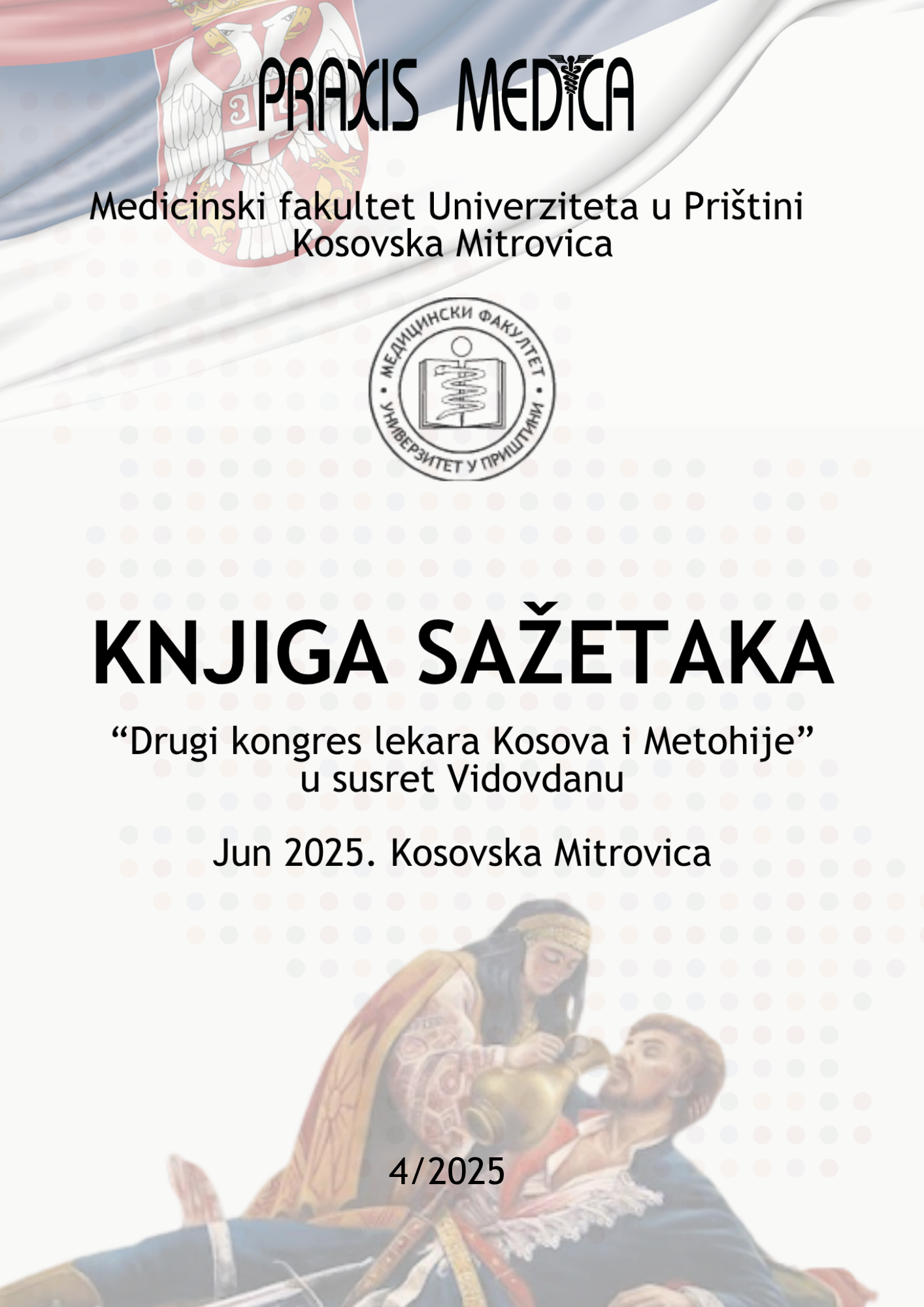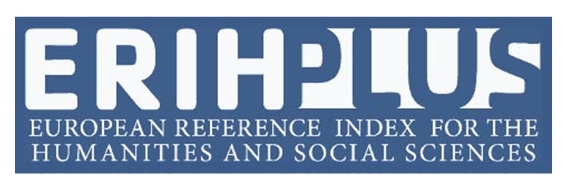Current issue

Volume 53, Issue 4, 2025
Online ISSN: 2560-3310
ISSN: 0350-8773
Volume 53 , Issue 4, (2025)
Published: 30.06.2025.
Open Access
All issues
Contents
30.06.2025.
Professional paper
UČENJE EMPATIJE U BALINT GRUPAMA
Uvod: Balint grupa se definiše kao mala grupa kliničara koji redovno analiziraju slučajeve iz svoje medicinske prakse kako bi stekli dublje
razumevanje odnosa lekar - pacijent.
SAŽETAK
Cilj ovog istraživanja je bio ispitavanje da li je učestvovanje u Balint grupama povezano sa većim stepenom empatije.
Metod: Ovo istraživanje je obuhvatilo 210 lekara iz primarne zdravstvene zaštite. Od 210 lekara, 70 je završilo Balint edukaciju u trajanju od
minimum godinu dana, dok 140 lekara nije pohađalo pomenutu edukaciju. Za svakog doktora sa završenom Balint edukacijom metodom slučajnog
izbora izabrana su po dva lekara koja nisu završila ovu edukaciju, a koja rade u istom domu zdravlja i imaju istu poziciju (lekar opšte medicine ili
specijalista). Za potrebe ovog istraživanja, konstruisan je opšti upitnik za ispitanike i korišćen je još jedan dodatni upitnik za ispitivanje empatije
Davisov „indeks interpersonalne reaktivnosti“ (IRI) . U statističkoj obradi podataka su korišćene metode deskriptivne statistike, Studentov t-test,
Pearson-ov hi-kvadrat test, Spearman-ov koeficijent korelacije i metode logističke i ordinalne regresije.
Rezultati: Preko tri četvrtine (82,9%) lekara u našem uzorku je bilo ženskog pola, dok je 17,1% ispitanika pripadao muškom polu. Srednja vrednost
godina starosti ispitanika je iznosila 48,3±9,6 i kretala se od 30 do 65 godina. Lekari koji su završili Balint edukaciju su imali značajno veće skorove na
subskalama Zauzimanje tuđeg stanovišta, Fantazija i Empatijska brižnost u odnosu na lekare koji je nisu završili, p<0,001. Što se tiče subskale Lična
nelagodnost, nije bilo statistički značajne razlike između lekara ove dve grupe, p=0,530. Prema našim rezultatima, utvrđena je povezanost između
subskala Zauzimanje tuđeg stanovišta, Fantazija i Empatijska brižnost (p<0,001), dok je subskala Lična nelagodnost korelirala samo sa subskalom
Fantazija (p=0,010). U multivarijantnom logističkom regresionom modelu za subskalu Zauzimanje tuđeg stanovišta jedini značajan prediktor je bila
Balint grupa. Rezultati su takođe pokazali da članovi Balint grupe imaju 2,8 puta veću šansu da imaju visoke skorove na ovoj subskali.
Multivarijantnom logističkom regresijom za subskalu Fantazija su se kao značajni prediktori izdvojili Balint grupa i lekari specijalisti. Naši rezultati su
dalje pokazali da su lekari sa Balint edukacijom imali 5, a lekari specijalisti 2,4 puta veću šansu da postignu visoke skorove na ovoj subskali. U
multivarijantnom logističkom regresionom modelu za subskalu Empatijska brižnost kao jedini prediktor se izdvojila Balint grupa (p<0,001), tačnije,
lekari sa Balint edukacijom su imali 6,7 puta veću šansu da postignu visoke skorove na subskali Empatijska brižnost. U univarijantnom logističkom
regresionom modelu za subskalu Lična nelagodnost statistička značajnost je bila postignuta samo za jednu varijablu-specijalizaciju (p=0,021).
Preciznije, lekari bez specijalizacije su imali veću „Ličnu nelagodnost“ u odnosu na specijaliste. Spearman-ova korelacija za subskalu Zauzimanje
tuđeg stanovišta je pokazala da postoji statistički značajna osrednja pozitivna povezanost između dužine Balint edukacije (broja godina) i skora na
subskali Zauzimanje tuđeg stanovišta (rs=0,331; p=0,005).
Zaključak: Naše istraživanje je pokazalo da su Balint grupe efikasne za učenje empatije među lekarima. Štaviše, naši rezultati snažno podržavaju
integraciju Balint grupa u medicinsko obrazovanje.
Ključne reči: Odnos lekar-pacijent, Balint grupe, primarna zdravstvena zaštita, empatija.
Mirjana Stojanović Tasić, Emilija Novaković, Kristina Rakić
15.01.2025.
Original scientific paper
USE OF PSYCHOACTIVE SUBSTANCES AMONG BELGRADE UNIVERSITY STUDENTS WITH DIAGNOSED SOMATIC OR MENTAL DISORDERS
Introduction/Objective
The objective of this study was to examine the relationship between use of psychoactive substances among University students and diagnosed somatic or mental disorders.
Methods
The cross-sectional study was conducted in a population of 2,000 students of the Belgrade University. Four faculties (Medicine, Geography, Economics, Electrical Engineering) from which the students participating in this research were chosen by the method of random choice (by computer listing), conducted in the period April - June 2010.
Results
We observed that are more numerous students who used psychoactive substances among students with diagnosed somatic illnesses compared to those without them. Statistical significance was found among students who used tobacco (p=0.027), alcohol (p=0.002), sedatives (p<0.001) and cannabis (p=0.021). Mental disorders are also connected to use of psychoactive substances. The statistical significance was achieved for all psychoactive substances except for alcohol.
Conclusion
Use of psychoactive substances is an important issue among University students with diagnosed somatic or mental disorder. Therefore, it is essential to recognize the symptoms and consequences of such behavior, and above all and connection thereof, the importance of prevention which may enhance better solution-seeking via proper education.
Mirjana Stojanovic-Tasic, Mirjana Virijevic, Kristina Rakic, Emilija Novakovic, Ivana Stasevic Karlicic, Nenad Milosevic, Jelena Aritonovic Pribakovic, Jovana Milosevic, Milica Bogdanovic, Suzana Adzic, Katarina Bisevac, Mary Vuksa
15.02.2025.
Original scientific paper
THE PREVALENCE OF ALCOHOL CONSUMPTION AMONG STUDENTS AT THE UNIVERSITY OF BELGRADE
Introduction/Objective
The objective of this study was to determine the prevalence of alcohol use in the student population of the University of
Belgrade.
Methods
The cross-sectional study was conducted in a population of 2,000 students of the Belgrade University. Four faculties (Medicine, Geography,
Economics, Electrical Engineering) from which the students participating in this research were chosen by the method of random choice (by computer
listing), conducted in the period April - June 2010.
Results
Among our respondents, the highest amount of spirits is consumed by respondents from the Faculty of Electrical Engineering, with 22% of
them consuming more than 6 shots on each occasion, while the smallest number of students who drink more than 6 shots on each occasion are from
the Faculty of Economics, with 8%. Students from the Faculty of Electrical Engineering, who have the lowest prevalence of cigarette use, consume
alcohol in a binge drinking pattern. The highest frequency of binge drinking in the past year and in the past month before the survey was among
respondents from the Faculty of Geography.
Conclusion
There is a need for developing a conscience about all the effects that alcohol has, especially physical ones which are not usually noticed
immediately; taking responsibility for own actions; working on a healthy life style and educating people to enhance and improve their health control.
Mirjana Stojanovic-Tasic, Mirjana Virijevic, Kristina Rakic, Emilija Novakovic, Ivana Stasevic Karlicic, Nenad Milosevic, Jelena Aritonovic Pribakovic, Jovana Milosevic, Milica Bogdanovic, Suzana Adzic, Katarina Bisevac, Mary Vuksa
01.12.2021.
Professional paper
Factors associated with involuntary hospitalization
In clinical practice, involuntary hospitalization in psychiatry is a procedure that patients with severe mental disorders are subject to due to the inability to make rational treatment decisions.. The prevalence of involuntary hospitalizations varies widely within and between countries. Involuntary admission to a hospital for psychiatric treatment can be life-saving and may be considered beneficial to some people in the long run. However, the experience of involuntary treatment can be traumatic, intimidating, stigmatizing, and lead to long-term avoidance of mental health services and an increased risk of rehospitalization. In this paper, we have considered the risk factors for involuntary hospitalizations and their frequency in the region and Europe.
Emilija Novaković, Ivana Stašević-Karličić, Mirjana Stojanović-Tasić, Tatjana Novaković, Jovana Milošević, Vladan Đorđević
01.12.2021.
Professional paper
Coronary sinus, microanatomical study
INTRODUCTION: Complete appreciation of the cardiac venous system requires an understanding of its embryological basis, its usual patterns of distribution, and its common variations. AIM: The aim of our study was to improve our understanding of the coronary sinus morphometrical and topographical anatomy. METHODS: The investigations were carried out on 25 human hearts (from 11 male and 14 female persons of mean age 59.5; range: 40 to 75 years). The classic anatomical technique of microdissection (using neurosurgical microinstruments) was performed under the stereoscopic microscope on 10 specimens injected with a 10% formaldehyde solution. The arteries and veins of an additional 15 hearts were injected with methylmethacrylate and immersed in a 40% solution of NaOH for corrosion. Following washing out and drying, the obtained vascular casts were examined and measured. RESULTS: Coronary sinus (CS) extends from the opening of the oblique vein of the left atrium into the great cardiac vein, to its empty orifice into the right atrium. The length of CS varied between 22.4 and 41.4 mm (mean 33.0 ± 6.1 mm). The diameter of CS at its beginning was 5.0 - 9.6 mm (mean 6.6 ± 1.3 mm), and its diameter at its atrial mouth varied from 6.6 - 12.0 mm (mean 8.4 ± 1.6 mm). The CS had varied relationships to the branches of the left or right coronary arteries. It extended superficial and above the artery in 16 (64%) hearts, and close superficial to the artery in 9 (36%) cases. Duplication of the superior vena cava associated with an aberrant left hepatic vein was found in one case. The persistent left superior vena cava, which drained into the right atrium via the enlarged coronary sinus, was formed by the persistence of the left anterior cardinal vein. CONCLUSION: Our study shows that the coronary sinus, created in an early stage of embryological development, is an important collecting vessel receiving the main veins of the heart.
Ema Bexheti, Emilija Novaković, Zdravko Vitošević, Milan Milisavljević
01.12.2019.
Professional paper
Thyroid storm after chest trauma
Thyroid storm is an acute and severe complication of thyrotoxicosis. It is characterized by high fever, sweating, tachycardia, and often heart failure too. The objectives of the paper is to present the case of a patient with thyroid storm developed after the trauma of the chest at previously apparently healthy individuals, diagnosed on the basis of clinical preview and based on the diagnostic criteria according to Burch and Wartofsky. The most common complication is Mb. Graves - Basedow, but often associated with multi-nodose goiter. Thyroid storm is the most severe form of thyrotoxicosis with a mortality rate of 8 to 25 %. Case report. We present an interesting case from our practice: thyroid storm caused after chest trauma in apparently healthy people, but with unrecognized hyperthyroidism and thyroid gland nodule. Conclusion. The objectives of this presentation were to raise awareness of the association between signs and symptoms of thyroid storm that dominate the clinical picture and complicate the initial presentation and the evolution of the situation caused by trauma. The treatment of hyperthyroidism resulted in conversion in sinus rhythm, withdrawal of symptoms and signs heart failure, and normalization of artery pressure.
Tatjana Novaković, Bogdan Dejanović, Zdravko Vitošević, Nenad Milošević, Jovana Milošević, Ljiljana Jovićević, Emilija Novaković, Miloš Mirković, Zlatica Mirković





